Rank Species | Genus Roystonea Higher classification Roystonea | |
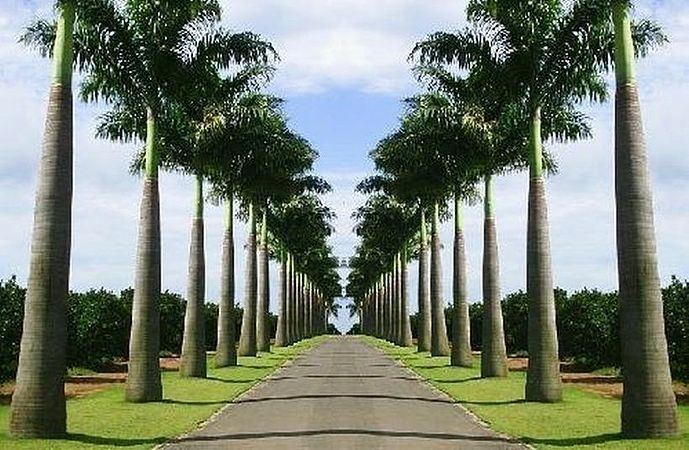 | ||
Similar Roystonea, Palm trees, Roystonea oleracea, Coccothrinax barbadensis, Sabal causiarum | ||
Roystonea borinquena proyecto
Roystonea borinquena, sometimes known as the Puerto Rico royal palm, is a species of palm which is native to Hispaniola, Puerto Rico and the Virgin Islands.
Contents
- Roystonea borinquena proyecto
- Description
- Taxonomy
- Common names
- Reproduction and growth
- Distribution
- Ecology
- Uses
- References
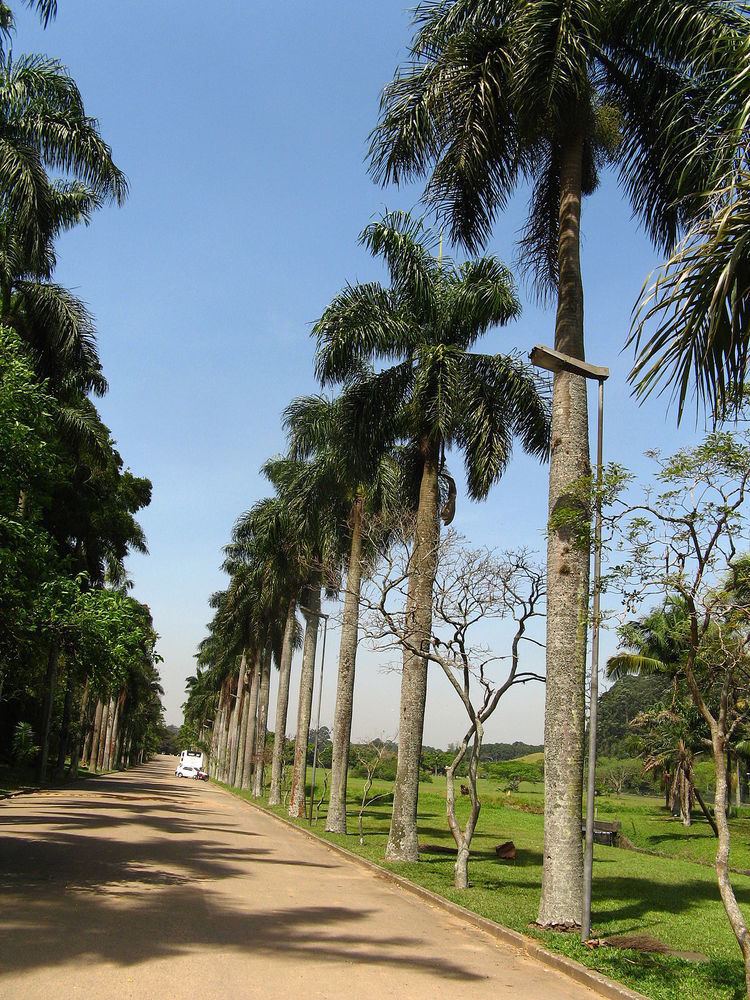
Roystonea borinquena proyecto
Description
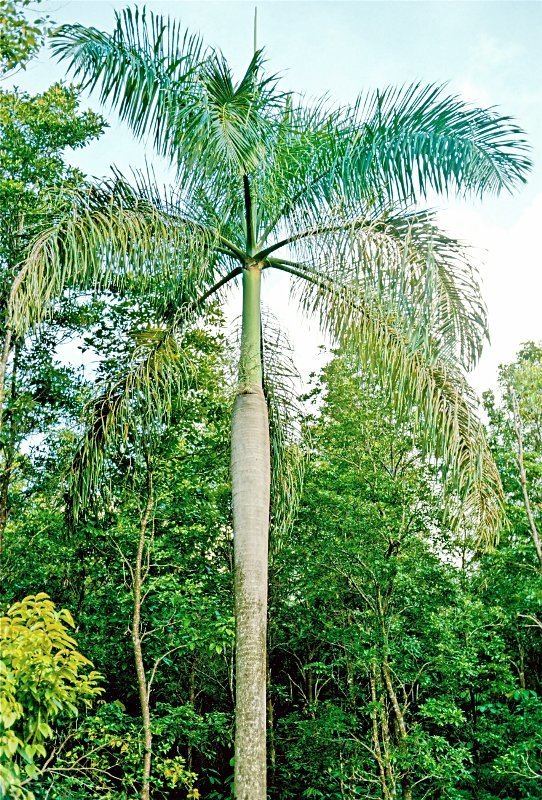
Roystonea borinquena is large palm which usually reaches a height of 12 to 18 metres (40 to 60 ft), but individuals 26.4 m (87 ft) have been recorded. Stems are smooth and grey-brown to cinnamon-brown, and range from 25–70 centimetres (10–28 in) in diameter. Leaves are 2.4–3.7 m (7.9–12.1 ft) long, with short petioles and leaf sheathes 1–3 m (3.3–9.8 ft) long which encircles the upper portion of the stem, forming a crownshaft. The 1–1.4 m (3.3–4.6 ft) inflorescences bear creamy yellow male and female flowers; the anthers of the male flowers are bright purple. The fruit is single-seeded, about 13 millimetres (0.5 in) long and 10 mm (0.4 in) wide. The greenish-yellow immature fruit turn brownish-purple as they ripen.
Taxonomy
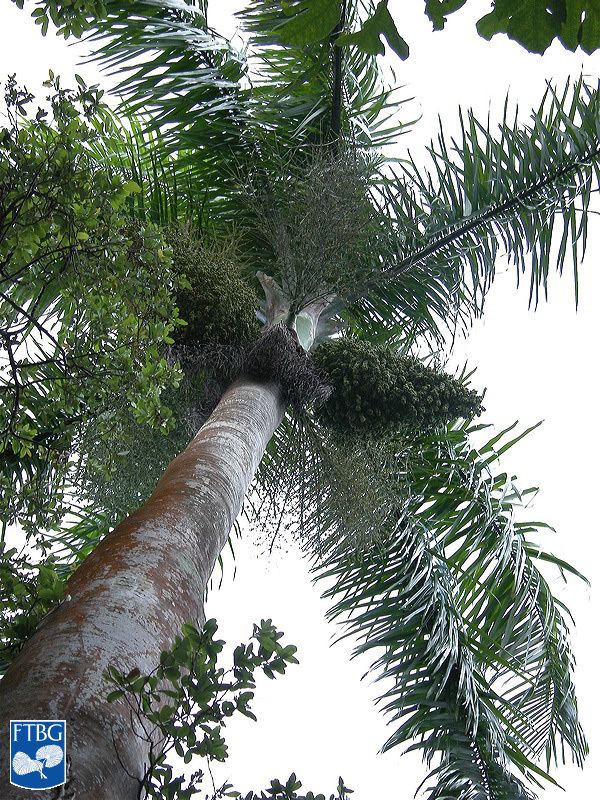
Roystonea is placed in the subfamily Arecoideae and the tribe Roystoneae. The placement Roystonea within the Arecoideae is uncertain; a phylogeny based on plastid DNA failed to resolve the position of the genus within the Arecoideae. As of 2008, there appear to be no molecular phylogenetic studies of Roystonea and the relationship between R. borinquena and the rest of the genus is uncertain.
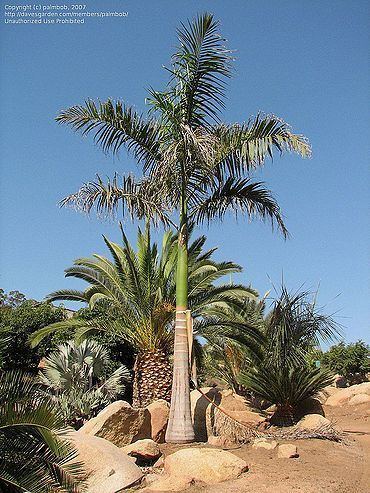
The species was first described by American botanist Orator F. Cook in 1901. For most of the 19th century, only two species of royal palms were generally recognised: Greater Antillean royal palms were considered Oreodoxa regia (now Roystonea regia), while Lesser Antillean ones were considered O. oleracea (R. oleracea). Due to problems with the way that the genus Oreodoxa had been applied by taxonomists, Cook proposed that the name Roystonea (in honour of American general Roy Stone) in 1900 be applied to the royal palms. The following year Cook described Roystonea borinquena.
Common names
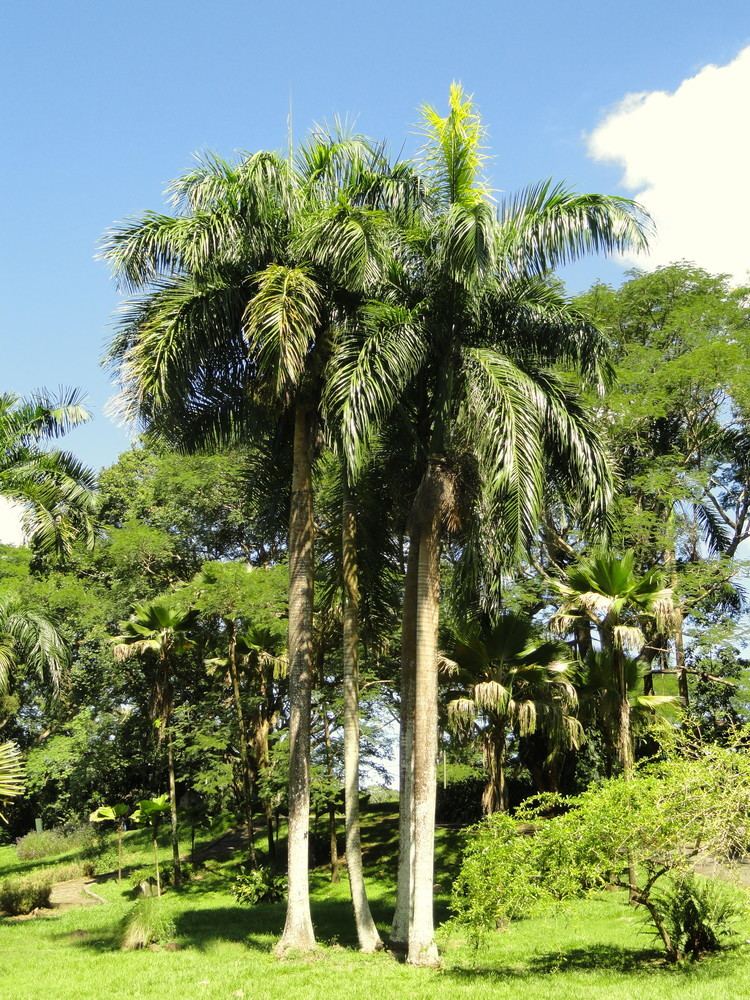
Roystonea borinquena is known as the "mountain-cabbage", "Puerto Rico royal palm" or simply "royal palm" in English, palmiste in Haiti, palma real puertorriqueña, manacla, palma caruta, palma de cerdos, palma de grana, palma de yagua, palma real, yagua and other names in Puerto Rico and the Dominican Republic.
Reproduction and growth

Young Roystonea borinquena trees may begin flowering when they are about seven years old, and they flower throughout the year. The flowers of Roystonea borinquena produce nectar and are visited by honey bees; and are thought to be insect-pollinated. Flowering individuals bear an average of 3.2 inflorescences per tree, and produce 6–12,000 fruit per inflorescence. Seeds germinate after 50–100 days. After six months, seedlings in full sunlight can reach a height of 30 centimetres (12 in); young trees can grow an average of 1 metre (3 ft 3 in) per year.
Distribution
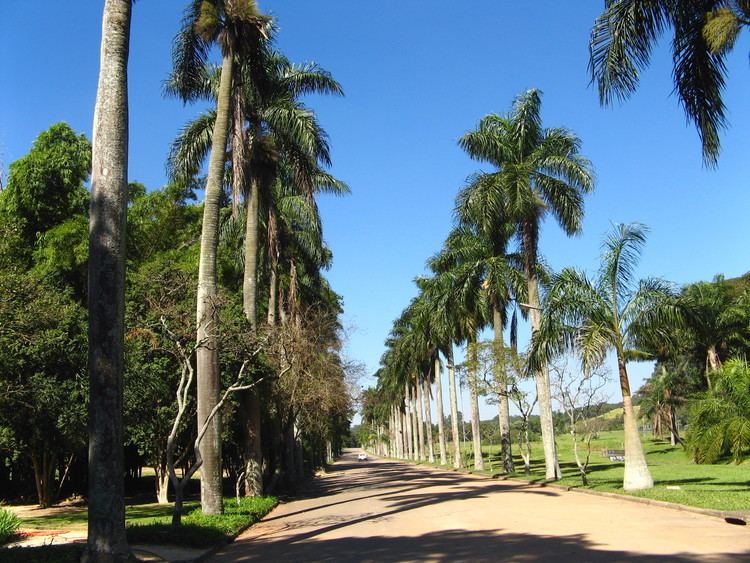
Roystonea borinquena is native to Hispaniola, Puerto Rico (including Vieques) and St. Croix, St. John and Tortola in the Virgin Islands. In Hispaniola, R. borinquena is found at elevations below 800 metres (2,600 ft) above sea level, except in the driest regions. In Puerto Rico it is found in areas below 300 m (1,000 ft) above sea level, that receive 1,250–2,500 millimetres (49–98 in) of rainfall.
Ecology
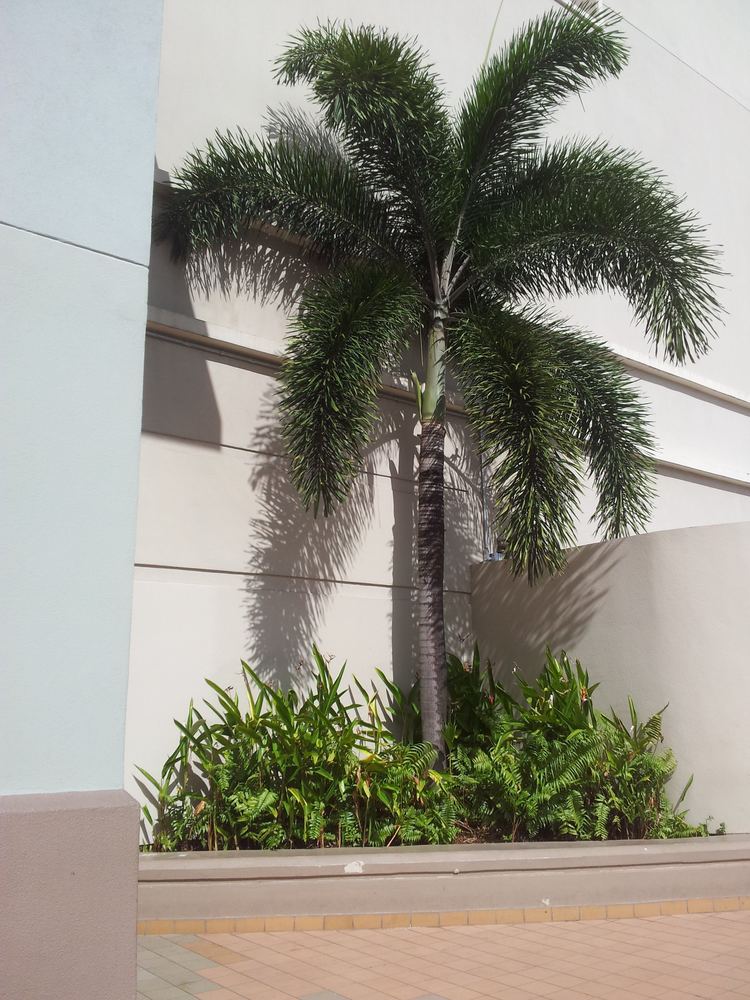
Roystonea borinquena fruit are a fat-rich food source for birds. White-crowned pigeons have been reported to disperse the seeds of the species.
Uses
Royal palms are popular ornamental plants due to their striking appearance; Roystonea borinquena is extensively planted as an ornamental in Puerto Rico. Its tolerance of air pollution, its ability to grow in a variety of soil types, and the fact that it roots do not damage sidewalks, increase its utility for landscaping and street planting. Its timber is occasionally used for construction but is susceptible to termite attack. Leaves are used as thatch and the leaf sheaths can be laid flat and used to make the sides of buildings. The fruit are fed to pigs and other livestock and the flowers are visited by honey bees.
